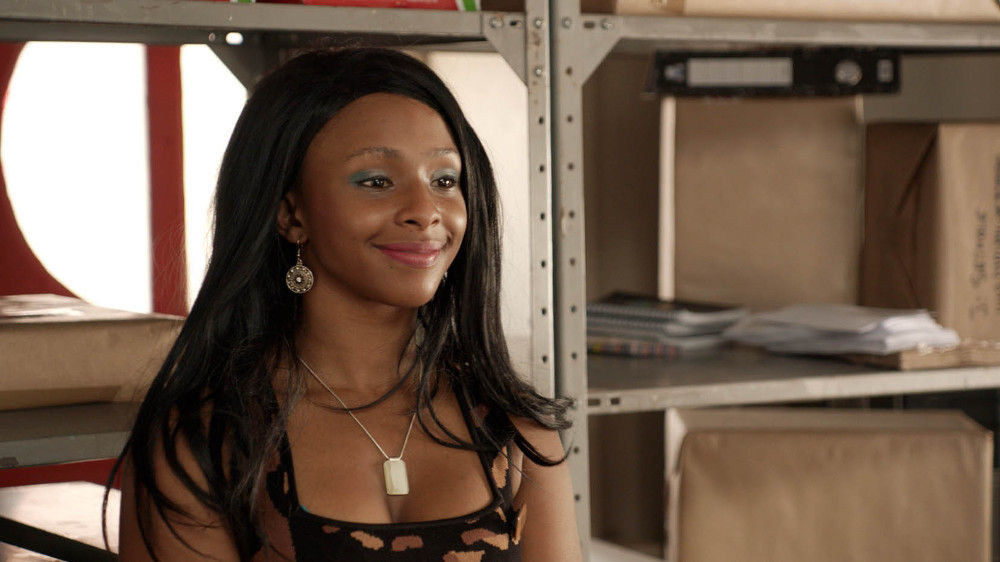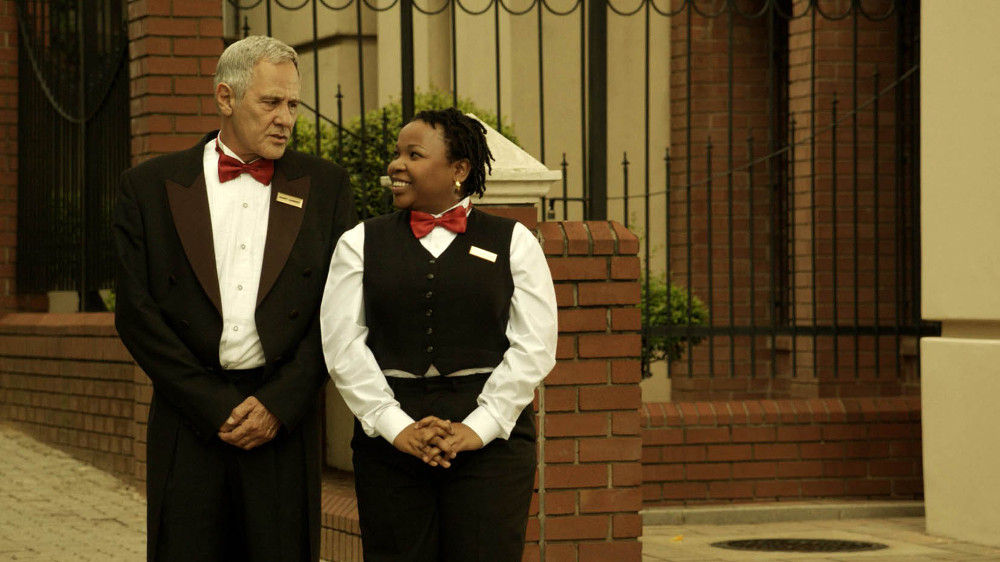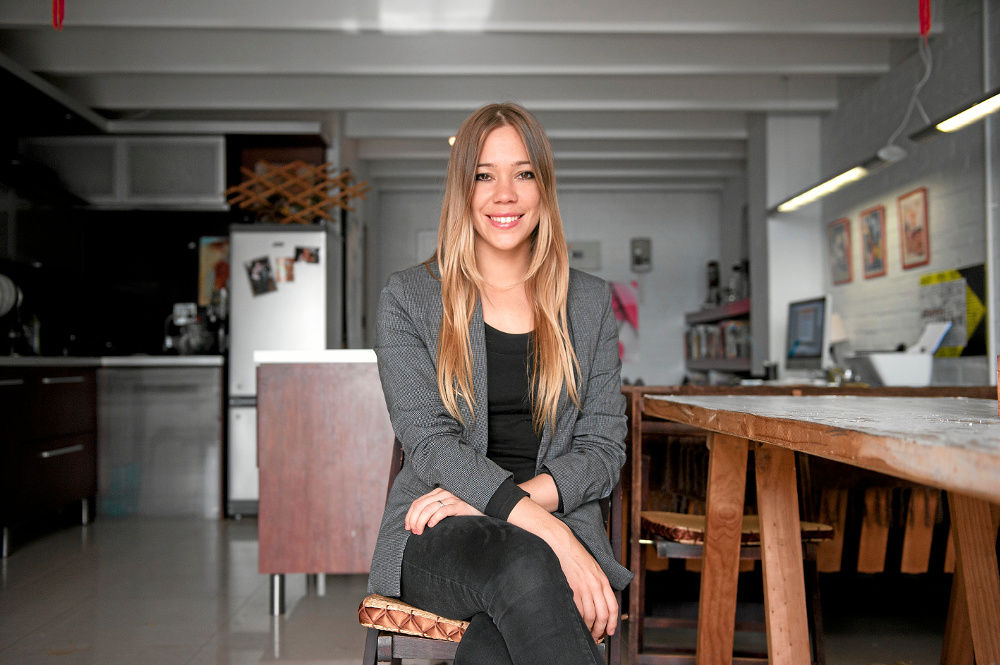Zandile Tisani directed 'Heroes' for the Africa by Women project.
“Walk on to a typical film set at lunch to see all you need to know about the South African industry,” says Zandile Tisani, a University of Cape Town film and media graduate who made her directorial debut in 2012 on Zaki Ibrahim’s Go With It music video.
At the time she was a freelance stylist working on films and commercials. “There are a few tokens and exceptions but usually there’s a table for the directors and producers – white men. The art department and wardrobe, usually white women, will sit together. Then your manpower and muscle, the grips, are black men at another table. You’d find me at the white table feeling awkward as hell. That’s the reality.”
At the National Film and Video Foundation (NFVF) Indaba held last year, the then arts and culture minister, Paul Mashatile, said: “There is a need to fast-track transformation in the sector with regard to ownership of production companies. We must also continue to invest in the development of skills required by the industry.”
The indaba included an announcement of a new partnership between the NFVF and the department of women, children and people with disabilities to provide sign language at NFVF training programmes and bursaries for documentary filmmakers with disabilities.
At the same indaba, NFVF chief executive Zama Mkosi said that transformation and the development of talent in the field remains a key challenge for the industry, mentioning the Africa by Women project and a parallel Youth Filmmakers Project as direct responses to those needs.
Project 10
In 2004 the NFVF was involved with the Project 10 documentary series. In celebration of the first decade of democracy, the SABC commissioned 10 documentary films by up-and-coming directors. Of the 10, nine happened to be women.
For this year’s anniversary to celebrate 20 years of democracy, the NFVF put out a call in June 2013 for female filmmakers exclusively and announced the winners of 10 film grants for fictional shorts in August that year. Tisani was one of the recipients.
Filmmakers were briefed to generate content for the SABC and for distribution to film festivals around the world in celebration of 20 years of democracy.

Boity Thulo in ‘Dear Betty’, directed by Lara Cunha.
The Africa by Women project coincides with a period of honest reflection by the NFVF and the department of arts and culture about the redress that is still required for the South African film industry to reflect the demographics of the country accurately. Some of these films will be screened at the Durban International Film Festival taking place from July 17 to 27.
Tisani’s short film Heroes was shot last month on location in Bryanston and Westdene and is produced by Quizzical Pictures. Having met all of the NFVF’s strict requirements Quizzical Pictures and Born Free Media were selected to produce five films each. This included 50% black and 100% female ownership and control, as well as all-female heads of department.
Dark comedy
Set in a middle-class suburb, just like northern Johannesburg’s Kelvin where Tisani grew up, Heroes is a dark comedy that explores a white community’s reaction to a black family moving into the neighbourhood in 1994.
“A couple of years after we moved to Kelvin from New Brighton in Port Elizabeth in the 1980s, our neighbour told us about a meeting they’d had before our arrival to discuss how the community felt about a black family moving in,” says Tisani.
The film pokes fun at what could have ensued after that meeting. Neighbourhood Watch assumes their duty to serve and protect and pure farce ensues. The action centres around the white residents but we never meet the black family that has them in such upheaval.
Tisani is quick to defend the perspective of her story. “Democracy has meant that I know each of these characters so well. I’m a storyteller first and foremost and want to be able to put myself in a position where I can tell stories from multiple vantage points. I’m very aware of expectations of black female writers to tell a certain type of story that speaks directly and seriously to identity and other ‘issues’ facing us. I’m not negating those narratives; it’s just really important that black women feel free to make commentary on whatever they’d like to.”
On a national level, historically significant times such as the celebration of 20 years of democracy this year tend to invoke regular reference to terms such as “empowerment”, “access” and “transformation,” assuming some degree of shared understanding of their meaning.
Broad ideas
The same is true in discussions about the national film industry. But the past two decades have revealed a number of considerations and perspectives on how to go about coming to grips with these broad ideas.
The Economic Baseline Study conducted and released on behalf of the NFVF by Deloitte in April 2013 reports that the local film industry contributed R3.5-billion to the economy, and created 25?175 jobs in 2012. Black people hold 66% of the jobs in the industry, with the gender divisions unspecified. Such analyses offer a quantitative backdrop to the gender and racial realities of a traditionally hierarchical industry where money talks.

A scene from Anneke Villet’s ‘The Last Doorman Standing’.
At the NFVF Indaba, Mashatile noted how “people are hungry to hear the South African story, the African story”. Tisani’s comments touch on the fallout of the strong positivist national rhetoric of reconciliation, nation-building and oneness that has characterised arts and culture in our young democracy.
The South African story has tended to deal with constructing the new post-apartheid nation state, either by looking back to our troubled past or through a focus on multiculturalism, solidarity and racial integration.
The dominance of films that uphold this international gaze on us as a political tale of triumph are often a result of strategic collaborations with international directors and production companies that buy control of narratives through funding and international distribution deals.
Plurality
In a country that has 11 official languages and a multitude of ethnicities and races, representations of national identity in film inevitably have to incorporate plurality rather than fixed categories.
Tshego Molete, head of skills development at the Association for Transformation in Film and Television, said in a video interview with
the Indiewire film blog: “It can’t always be about Aids or crime or [Nelson] Mandela. People have everyday concerns and we need to relate to those.”
A healthy development in a maturing democracy is the creation of platforms and distribution netorks for various individual stories, which Roger Young described as “postnationalistic and nontriumphant” in A car crash too far: What SA films can’t learn from Hollywood. He cites this relatability as the draw card of the local Afrikaans “Hartiwood” industry and Chicco Twala’s Nollywood-like Bubblegum Films, which enjoy commercial success and audience support.
Mzansi Magic’s Lokshin Bioscope development project and their Mzansi Bioscope channel have responded to, and capitalised on, audiences’ appreciation for movies that don’t promise much more than high entertainment values and low budgets.
Overarching democracy rhetoric
In the Africa by Women project, the writers and directors cleverly and subtly critique overarching democracy rhetoric by filtering it through the lens of individual stories. The result is a mosaic of 10 seemingly unimportant lives living through very important times.
“South Africa holds its own with simple intimate stories. That’s where we shine,” says Lara Cunha, who came to this realisation in Cannes, where her submission to the 48-hour film project, Child, was screened. “We competed with stories made in 48 hours from LA and New York that included special effects of a calibre yet to be seen in the local feature film industry. That’s when I realised that what put us in the top 14 out of 95 films are strong narratives that resonate on a personal level.”
Cunha is the co-writer (with Phuthi Nakene) and director of Dear Betty, set in a small town just like Springs where she grew up. In the film produced by Born Free, Reabetswe (Boity Thulo) – called Betty by customers and colleagues – lives out her days processing mail to its onward destination. Only lost letters stay behind. One day an exciting stranger hands her a package that sends Betty on her way.

Rene van Rooyen, director of ‘The Forgotten Country’, which was shot in Diepsloot. (David Harrison, M&G)
Rene van Rooyen’s The Forgotten Country is shot in Diepsloot – the northern township bordered by luxury developments Dainfern and Steyn City. In the film a wall in a dystopian Cape Town of the future separates two sisters. On one side Danielle (Daniela Grech Cumbo) lives among, and cares for, the chronically poor and ill. Her sister Eliza (Nicole Hanekom) has chosen a life of personal prosperity on the other side.
Van Rooyen’s father spearheaded Stellenbosch University’s Institute of Futures Research. His long-term analyses of macro- and microeconomic situations spurred her to think of a “worst-case scenario projection of the growing gap between the haves and the have-nots” that’s been developing in her mind for five years.
Pretence and truths
A thematic thread running through all 10 films is a tension between pretence and the truths that lurk below. And each writer and director has their own ideas about their future in film, and what transformation means to them personally.
Tisani would like to demystify the film industry for those who come after her. “Outline the steps I followed and publicise little things like how to stay informed about opportunities such as Africa by Women.”
She calls such knowledge “soft skills” that include the understanding of how to present one’s self for opportunities such as grants. “This
is the difficulty when you try to encourage marginalised people. The foundation of ‘access’ is having the confidence to throw your name in the hat. It comes from a history of affirmation.”
Thandeka Zwane, product and development manager at the NVFV, says: “The priority with Women in Film is to nurture the filmmaker as opposed to the project.
“These are women with over two years experience in various sectors of the industry and we are sure that they have what it takes to go the distance. Though this is a one-year project we’re looking at progressing these women over a three-year period.
“A short film is a great start as a director, it’s a calling card that shows what they can do. From here we hope to take them into our producer development courses. In five years’ time the women on this course are going to be our breakout feature film stars.”
Other films in the top 10
The Manicurist (Born Free Media), written by Nolitha Tshinavha and Lindiwe Mkhonza and co-directed by Beathur Mgoza Baker, about the owner of a successful nail salon who has shelved her dreams of becoming a singer – until a gospel sensation walks into her salon.
Bougainvillea (Born Free Media) by Genevieve Akal, writer and director, looks at the interplay between maintaining a well-constructed online life and living an authentic real one.
The Gate (Born Free Media) by Lwazi Mvusi is a sci-fi that tackles themes of access to land and resources, 40 years after democracy.
Through Her Eyes (Quizzical Pictures) written by Nomusa Nkabinde and directed by Xolile Tshabalala about Somi’s return from the United States to wed her longtime fiancé Sipho. She must confront old family dynamics, demands of religion and culture and the reality of a relationship with a man she has been far away from.
Lungelwa (Quizzical) by Nthabi-seng Mokoena lays bare the emotional, political and historical tragedy suffered since Marikana through the eyes of a miner’s widow.
The Last Doorman Standing (Born Free Media) by writer and director Anneke Villet about the small life of a white doorman who exists for his model train sets until he’s forced to confront the new South Africa head-on, in the form of a new black trainee.
The Dance (Quizzical Pictures) by director Bonie Sithebe and co-writer and director Jayan Moodley, follows the lives of two ill-fated lovers and dancers who move from a small town to the city.
The struggle continues
Safi Faye of Senegal is commonly recognised as the first African woman to direct a film, La Passante (The Passerby) in 1972. Though Sarah Maldoror was from Gaudelupe, she’s credited in all discussions of early African women in film. In 1968 she directed a short, Monangambée, set in Angola and filmed in Algeria. Her feature film Sambizanga (1972), also about Angola, was shot in the former Congo-Brazzaville.
At 115 years old, South Africa’s is the oldest film industry on the continent, but its output has not been representative of the country’s demographics and the participation of black people and women has not been substantial. During apartheid, only three white women directed feature films.
Following the advent of democracy in 1994, Palesa Nkosi was the first black woman to make a short drama, Mamlambo, in 1997. Maganthrie Pillay’s 34 South, released in 2005, was the first feature film directed by a black South African woman.